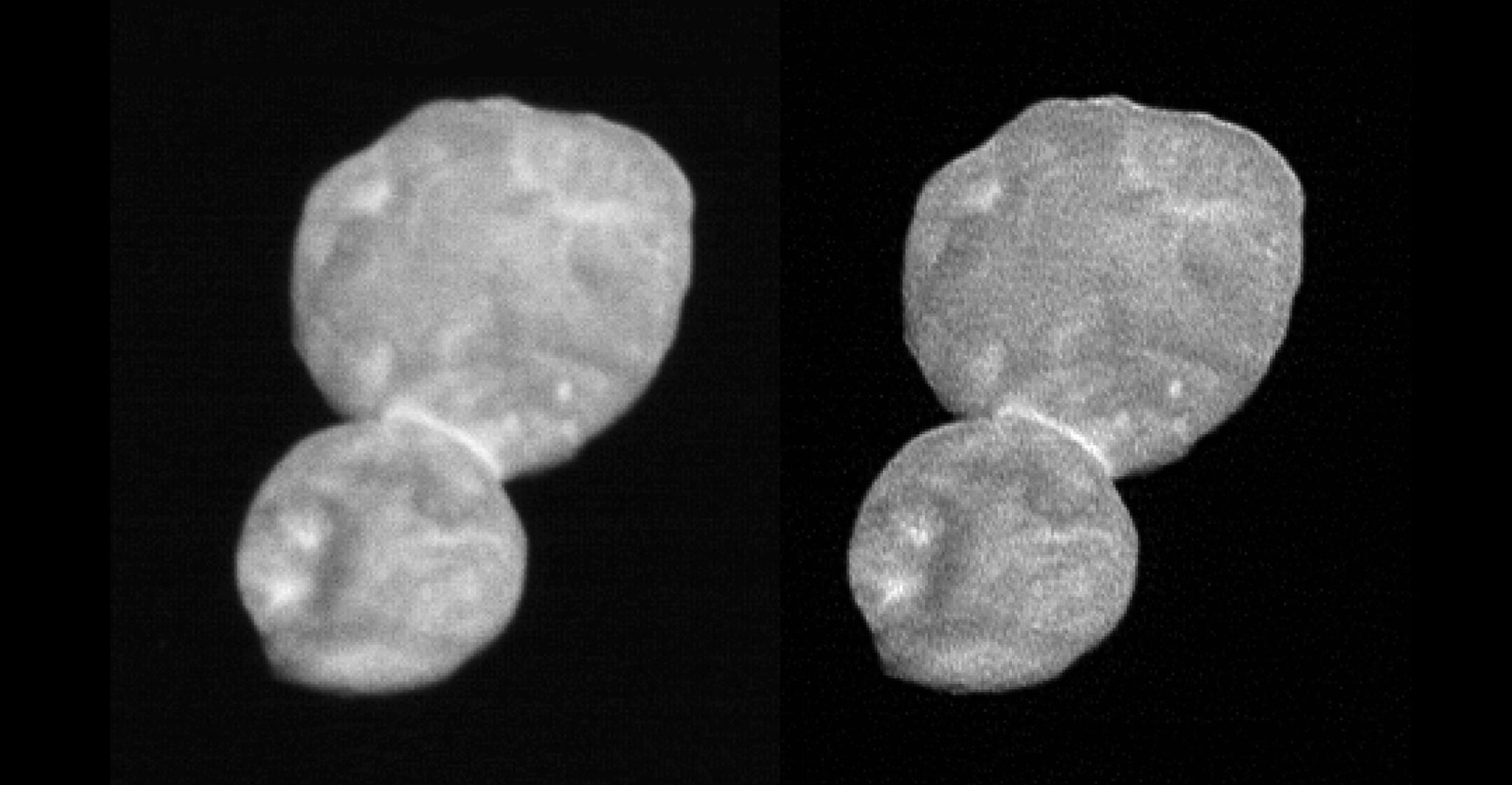 The first high-resolution images of a 34km tall snowman-shaped object that lies a billion miles beyond Pluto have been released by Nasa.
The first high-resolution images of a 34km tall snowman-shaped object that lies a billion miles beyond Pluto have been released by Nasa.
The photographs of Ultima Thule, captured by the New Horizons spacecraft, were revealed at a press conference on Wednesday.
The dark object is formed of two spheres which have combined to form one celestial object.
Alan Stern, principal investigator for New Horizons, said: “It is only really the size of something like Washington, DC and it is about as reflective as garden variety dirt. It’s a snowman if it’s anything at all.
“I don’t think we have stressed enough, so I really want to say, what this spacecraft and this team accomplished is unprecedented. We were basically chasing it down in the dark at 32 000 miles per hour (51 000km/h).”
He added: “It is going to revolutionise our knowledge of planetary science.”
Jeff Moore, New Horizon’s geological and geophysics lead, said Ultima Thule is “perhaps the most primitive object that has yet been seen by any spacecraft”.
He added: “These are the only remaining basic building blocks in the backyard of the solar system that we can see that everything else that we live on, or receive through our telescopes, or visit with our spacecraft, were formed from.
“Think of New Horizons as a time machine that has brought us back to the very beginning of the solar system, to a place where we can observe the most primordial building blocks of the planets.”
‘Tip of the iceberg’
Ultima Thule was formed by the joining of objects orbiting around each other.
The images released so far are “just the tip of the iceberg”, Stern said, adding only 1% of data stored on the spacecraft has currently been received by scientists.
It will take nearly two years for New Horizons to beam back all of its observations of Ultima Thule.
Among the images the scientists are hoping to receive are “higher resolution views” and pictures taken when the sun is at a better angle for viewing Ultima Thule. However, the photos that have already been sent back have revealed some of its properties.
Carly Howett, New Horizons co-investigator, said: “We can definitively say that Ultima Thule is red.”
New Horizons captured the images from a distance of around 80 000km from the surface of Ultima Thule. Future images sent back to Earth will be of a higher quality as they will have been taken closer to the object and will benefit from better sunlight. Stern added: “It’s going to just get better and better.”
New Horizons rocketed from Cape Canaveral, Florida in 2006.

